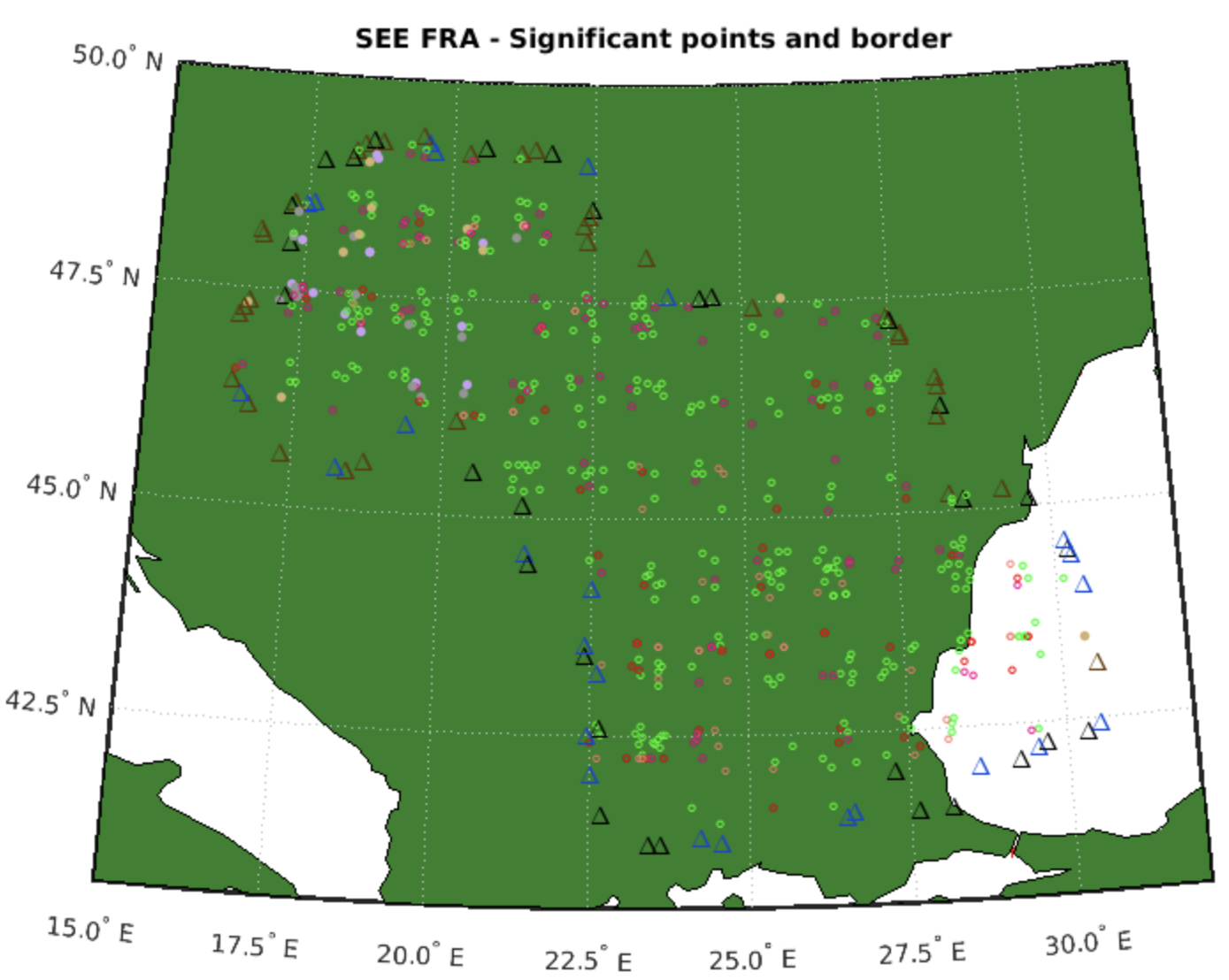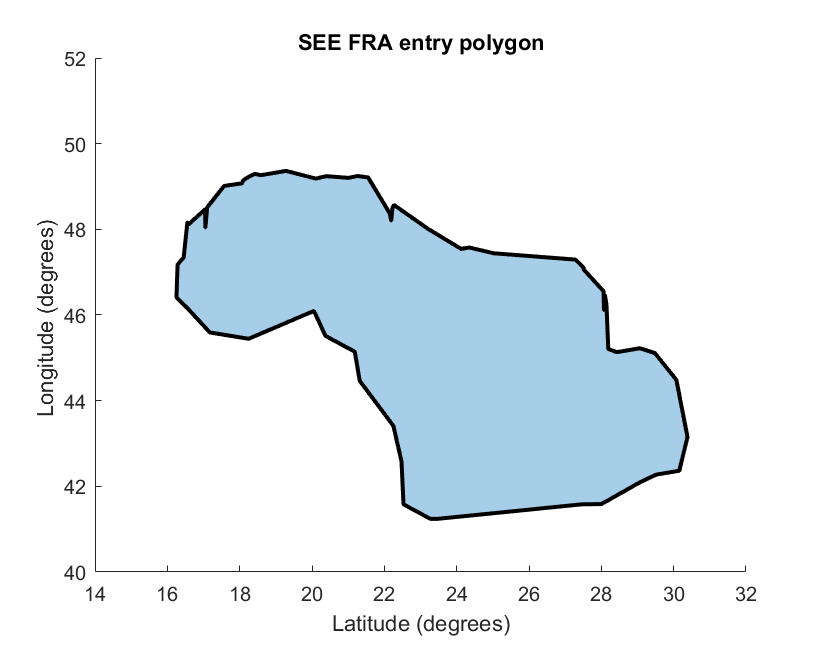About axioms
Axiom is a fundamental truth in mathematics and philosophy. A claim that we do not have to prove, but we accept it as a true statement. The term axiom, in addition to theorems and postulates, can already be found in Euclid’s Elements (BC. 300). We can find the basic truths in all walks of life, including air transport.
Air transport takes place in the airspace. Our entry describes an axiom of an airspace based on the latest airspace concept.
- airspace axiom
- simple airspace polygon
- free route airspace
- significant points.
- significant points
Free Route Airspace
Free Route Airspace (FRA), a new concept implemented across European airspace, is designed to eliminate the adverse effects of air traffic, reduce fuel consumption, simplify and expand flight planning. We can model FRA system by using graph theory, networks and geometry. We work with 2-dimensional space defined by latitude a longitude in the horizontal part of FRA. The airspace is defined by significant points. The significant point is given by GPS coordinates, name, and other attributes, see [1] and [2]. The FRA significant points, are divided in:
1. FRA Horizontal Entry Point - It is a published significant point located on the horizontal boundary of FRA from which the FRA operations are allowed. It should be located exactly on the boundary of the relevant FRA area. This type of point is displayed with a symbol \Delta (Δ) and black colour in Figure 1.
2. FRA Horizontal Exit Point - It is a published significant point located on the horizontal boundary of FRA to which the FRA operations are allowed. It should be located exactly on the boundary of the relevant FRA area. In Figure 1, this type of point is displayed with a symbol \Delta (Δ) and blue colour.
3. Combined FRA Horizontal Entry and Exit Point - It is a published significant point located on the horizontal boundary of FRA from or to which the FRA operations are allowed. It should be located exactly on the boundary of the relevant FRA area. This type of point is displayed with a symbol \Delta (Δ) and brown colour in Figure 1.
4. FRA Intermediate Points (I) - It is a published or unpublished point defined by geographical coordinates or by bearing and distance via which FRA operations are allowed. The FRA concept includes other type of significant points as well, but these are not necessary for us now. This type of point is displayed with a symbol \ circ (º) in Figure 1. We can also see the different colours. The intermediate points can be used for overflights and/or for arrivals to the airports and/or departures. We needed this detailed division for our calculations, but this is not a part of this description.
 Figure 1: Significant Entry, Entry and Exit, and Intermediate points
Figure 1: Significant Entry, Entry and Exit, and Intermediate pointsSpatially Bounded Airspace Axiom
For each airspace V there is a simple polygon
\begin{equation*} B({V})=\left\{ [x_{i},y_{i}];[x_{i},y_{i}]\in {V},i=0,1,\cdots,n,and\;x_{0}=x_{n},y_{0}=y_{n}\right\} \label{eq:polygon} \end{equation*}
 Figure 2: SEE FRA airspace polygon
Figure 2: SEE FRA airspace polygon
We can see the graph with SEE FRA significant points in Figure 1 . All these points have the coordinates that are expressed by longitude and latitude in a geodetic coordinate system. We identified the axiom that determines an airspace. Each airspace is given by a simple polygon of significant entry or (entry and exit) points.
We can see a polygon for SEE FRA airspace in Figure 2, for details see [4]. This polygon defines the horizontal boundary of airspace. The characteristics of this polygon are that it does not contain holes and loops. We were able to formulate and prove all these statements after studying an airspace’s FRA concept and mathematical properties. We have also shown that for any set of significant points of airspace, it is possible to construct a simple airspace polygon.
References
- Documentation Section, EUROCONTROL FRA Design Guidelines (Significant points) . FRA Research Cloud (2021), https://tinyurl.com/fra-research-cloud/. Retrieved 2022-6-4
- Szabó, P., Ferencová, M. and Železník, V.; https://doi.org/10.3390/a15040123. Algorithms 2022, 15, 123.
- Szabó, P., Ferencová, M. and Blišťanová, M.; https://doi.org/10.3390/axioms11060244. Axioms 2022, 11, 244.
- The vertex SEE FRA . MATLAB Central File Exchange, https://www.mathworks.com/matlabcentral/fileexchange/90277/. Retrieved 2022-6-4
